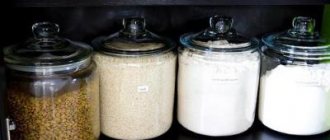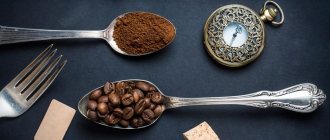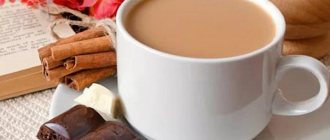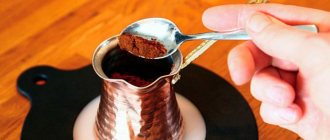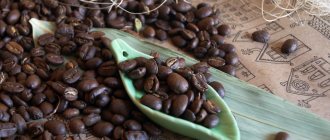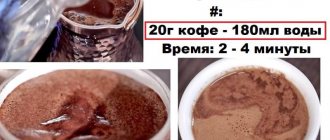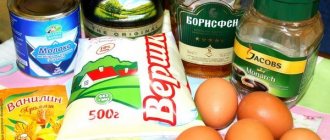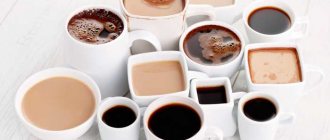The tradition of holding tea parties appeared in Rus' at the beginning of the 13th century. Only nobles and merchants could afford to drink loose leaf tea. The large table was set with a snow-white tablecloth, porcelain service and various sweet treats. Be sure to light the samovar. Historians claim that more than 20 cups of the drink were drunk during the feast.
Currently, it is customary to drink tea and any other drink from cups, glasses with coasters, tempered glass glasses and mugs. Any consumption of food or drink should bring taste and aesthetic pleasure. Especially if such utensils are used for their intended purpose. After all, the shape and volume of the dishes are specially developed by manufacturers and tasted repeatedly to fully reveal the taste and aroma.
For many, there is no difference between a cup and a mug. However, there are differences.
What is a mug?
This is a container for drinks of any temperature. It has a durable handle that is comfortable to hold even when the container is filled to the top. Such dishes are produced from glass, metal, porcelain, ceramics and plastic. The height of the mug is slightly larger than a standard glass.
The drink inside retains its heat for 15 minutes and only then begins to gradually cool down. If the mug has a thermal effect, then the liquid in it remains hot for a long time. Such utensils are convenient for everyday use, especially for lovers of large-volume drinks.
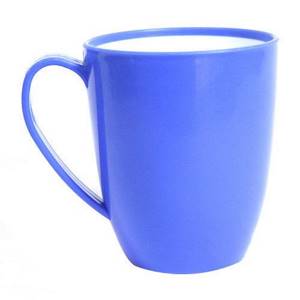
The magic of the glass and the mystery of the bowl: how do the shape and size of the cup affect the taste of tea?
Advanced tea “users” are sure that every detail matters when preparing a drink. This includes the shape of the vessel in which the brewed tea is served. In the traditional Chinese tea ceremony it is always a tiny bowl, literally enough for one sip. The Turks serve tea in small vase-shaped glass glasses - messes. The British prefer a classic porcelain cup on a saucer, while the Tibetans and Mongols prefer large bowls. Argentines sip mate from a calabash, while Malays and Americans sip from a glass with ice. And of course, don’t forget about tea in cut glasses with cup holders on trains!
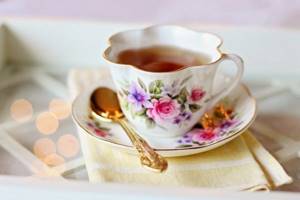
But which shape is actually optimal?
We asked a tea expert...
It turns out that this largely depends on what kind of tea is served - black, green, white or floral, as well as on the time of year and... even mood!
“The shape of the cup does not affect the taste of tea, but its aroma, because from different cups of different shapes it will spread differently,” says Sergei Safonov, an expert on Chinese teas. He compared tea to wine: “There are glasses for Burgundy, there are glasses for Bordeaux, there are glasses for Calvados and for white wine separately. And the aroma of these wines spreads better from those glasses that are intended specifically for them. In the same way, teas all open differently.”
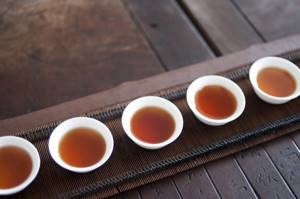
One tea needs a wide area of contact with air, which means a wider cup. For others, the main thing is the volume of the sip, and here you need to take a cup that is convenient for drinking the right amount of drink at once. It is very important to consider how the flavor of tea changes depending on its temperature. If you like a very hot drink, you will need one cup, and if it is warm, you will need a completely different one. The choice of cup shape also depends on the season - in winter or summer, you want completely different sensations from the cup in your hands and the tea itself.
Lefard mug “I’ll give you happiness”, 400 ml (art. 104-617) 742 rub.
Balsford tea set, “Leaves”, mug + silicone strainer, 380 ml 571 rub.
Lefard mug, 400 ml (art. 275-899) 744 rub.
Set of Vitto mugs “Cats”, 2 pieces, 350 ml 400 rub.
Lefard “Nurse” mug, 300 ml (art. 356-183) 102 rub.
Infuser mug Balsford Grace “Shanti”, 3 items 434 rub.
Non-scalding mug “Chocolate”, 450 ml 1050 rub.
Lefard mug “Starry Night” (art. 104-648) 666 rub.
View all cups and mugs
We asked a professional ceramist...
“As a tester of different cup options, I can only say a rather banal thing - a cup must be chosen based on the preferences for the temperature of the drink. Lower and wider - it will cool faster, higher and narrower - slower. A thicker wall will retain heat longer,” comments professional ceramist Alexandra Zolotareva.
According to her, it is very important how high-quality the glaze is inside the cup and how heat-resistant its walls are - dishes with defects may not withstand too high a temperature and burst, or their inner coating will develop microcracks (cracks). But, as a rule, this does not happen with dishes from trusted manufacturers.

People who prefer to see what they are drinking choose clear cups or cups with white glaze, which does not distort the perception of the color of the drink. But the Chinese believe that what is important in a cup is its aesthetic component and the presence of an outer surface that is pleasant to the touch - so that every moment of drinking tea brings pleasure: for the taste buds, for the eyes, and for the hands. They insist that a true tea lover should not only have several clay teapots for brewing, but also a whole range of different drinking vessels - for different occasions. The height of pleasure is cups made of Yixing clay, but this is a pleasure for true connoisseurs who are ready to buy expensive dishes.
If you want to have a real tea ceremony at home, choose small handmade ceramic cups.
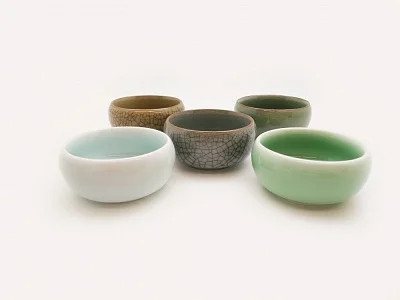
Lovers of English classics should take a closer look at classic porcelain - white or even transparent.
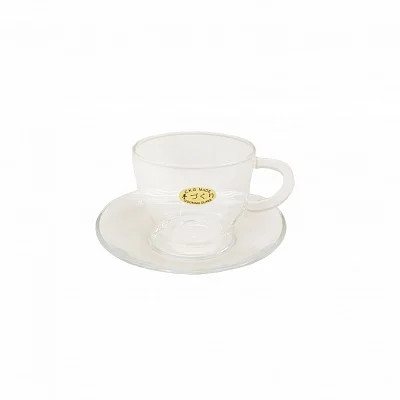
To warm your hands on cold autumn days without getting burned, take a double-walled glass thermos cup or ceramic glasses with silicone burn protection.
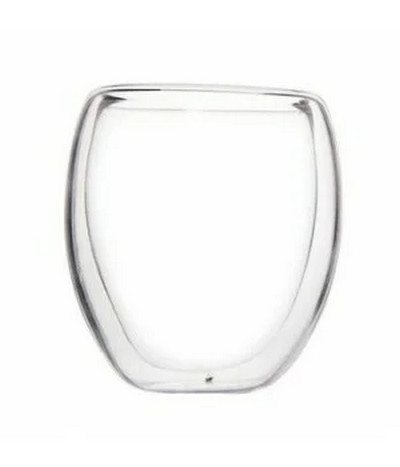
What are you drinking from now?
What is a cup?
These are utensils used for drinking hot liquids and soups. For tea or coffee, they traditionally produce forms with one elegant handle, into which, according to the rules of etiquette, it is not customary to insert fingers or stick out the little finger. The cup is taken by the handle, as if pinching it with your fingertips on both sides. The average diameter along the upper rim is 10 cm.
Soup ones are more like a bowl with one or two symmetrical handles, not so graceful, but wider.
Such dishes are used quite rarely, mainly on special occasions.
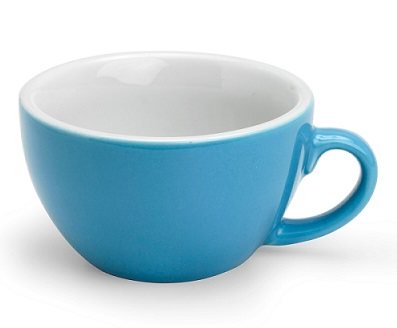
Preferences in different situations
Countries and connoisseurs
In Russia, a coffee cup with a volume of 100-130 ml is in demand, which is considered large in Europe and Asia. In the USA, they prefer to drink from impressive containers up to 180 ml, and cappuccino and latte - up to 350 ml.
Coffee gourmets prefer half-shaped containers called dmitas. They hold 60 ml of natural coffee. They pour coffee drinks into glasses up to 250 ml.
Which cups do you most often drink coffee from?
up to 130 mlot 130 and above
For home and office
To make coffee at home, coffee lovers use ceramic mugs of their favorite color with a volume of 170 to 220 ml. These sizes allow you to pour cappuccino, latte, mocha. The main thing is that there is a comfortable handle that allows you to hold a hot cup in your hands.
Interesting! How to brew coffee in a coffee maker
For work or the office, buy medium-sized containers of 150-170 ml, which are versatile. They are also used for tea, juices, and water. Preference is given to pleasant pastel colors that do not irritate.
For a coffee shop
Cafe owners choose cups of at least three sizes:
- 50-90 ml – for serving ristretto, espresso;
- 170-220 ml – for cappuccino, latte, Americano;
- up to 350 ml – for coffee cocktails.
If you buy mugs from one supplier, you can negotiate a discount. Another plus is that the same dishes will emphasize the style of the coffee shop.
Purpose of the mug
Modern technologies make it possible to produce mugs not only for drinking drinks, but also for long-term heat retention, creating individual prints, photographs on the walls of the dishes and printing inserts for every taste, including changing the color of the walls “chameleon”.
For fun, craftsmen potters produce joke mugs. In appearance they are not at all different from ordinary ones. At the same time, it is simply impossible to drink from them without spilling a single drop. When making it, the craftsman leaves several holes in the handle and bottom. Only knowing the secret of the location of these holes can you stay dry.
Mugs have no division by purpose. They are used for any drinks: hot and cold. The exception is beer mugs, which are produced only from glass or ceramics and are often supplemented with a lid. They have a maximum volume of up to 1 liter.
How many milliliters are in a glass
The volume of a glass is usually 200-250 cm³ . Smaller glasses are often called cups, and very small glasses are called shot glasses.
| Glass ML | Capacity in milliliters |
| How much water is in a cut glass (to the brim) | 250 ml (to the brim) |
| How much water is in a faceted glass (before risks) | 200 ml (before marks) |
| How much water is in a regular glass | 250 ml |
| How much water is in a tea glass | 250 ml |
| How much water in a juice glass | 200 ml. |
| How much water is in a beer glass | 500 ml. |
| How much water is in a regular white disposable cup? | 180 ml |
| How much water is in a faceted glass? | 100 ml |
| How much water is in a regular glass? | 50 ml |
| How much in a glass | In a glass 250 ml | In a glass 200 ml |
| water | 250 grams | 200 grams |
| flour | 160 grams | 130 grams |
| Sahara | 200 grams | 160 grams |
| coarse salt | 360 grams | 280 grams |
| fine salt | 400 grams | 320 grams |
| powdered sugar | 180 grams | 140 grams |
| milk | 250 grams | 200 grams |
| condensed milk | 300 grams | 250 grams |
| sour cream | 260 grams | 210 grams |
| vegetable oil | 230 grams | 190 grams |
| ghee | 230 grams | 190 grams |
| buckwheat | 210 grams | 170 grams |
| semolina | 200 grams | 160 grams |
| rice | 225 grams | 180 grams |
| cocoa | 160 grams | 130 grams |
| jam | 350 grams | 275 grams |
| raisins | 190 grams | 155 grams |
| poppy | 170 grams | 135 grams |
| honey | 320 grams | 260 grams |
| oatmeal | 100g | 80 grams |
| berry puree | 360 grams | 290 grams |
| walnuts | 100g | 80 grams |
| peas | 230 grams | 170 grams |
| cottage cheese | 250 grams | 200 grams |
| pearl barley | 230 grams | 180 grams |
| millet | 220 grams | 180 grams |
| popcorn (grains) | 340 grams | 250 grams |
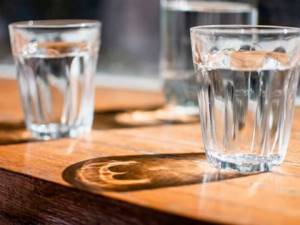
Purpose of the cup
For each hot liquid drink there is a specific type of cup:
- soup or broth - used for serving broths or puree soups. For ease of eating, they are available with one or two handles. Capacity from 320 – 430 ml.
- for tea there are two types: standard and tasting volume.
The standard includes dishes with an average volume of 200 ml.
For tasting - a small cup used for drinking green or black tea with a high degree of brewing.
- Coffee houses differ from tea houses in a variety of types:
An espresso cup has a minimum volume of 35 – 40 ml.
Made from thick porcelain to retain heat.
Demitasse cup – produced in volumes of 60 – 90 ml. Outwardly it resembles a bowl with a handle.
The inside has a narrowed bottom for easy mixing of the drink.
Espresso or Turkish coffee is poured into such dishes.
A cappuccino cup always comes with a saucer.
Due to the presence of high foam when brewing this aromatic drink, the average volume is 220 ml.
You can also serve lungo, doppio and espresso with cream in such dishes.
The latte cup is one of the most capacious coffee forms from 220 – 360 ml. Made from thickened porcelain. Reminiscent of an elongated glass with a handle.
An Americano cup has thick walls and holds from 200-220 ml. Similar in shape to espresso pots, but larger in size.
Frappuccino cup is a glass with a handle from 350 to 500 ml. The higher it is, the more components you can add to your coffee cocktail.
From the history of mugs-cups
Much that explains to us the differences between vessels that are essentially identical in appearance and purpose can be found in the history of the creation of these drinking utensils.
First cups
As the first cups, people used all sorts of devices that vaguely resembled modern cups: these were the horns of wild animals, the shells of ostrich eggs, later clay cups and products made from a single piece of amber appeared. Yes, such dishes looked quite impressive, but drinking from them was hardly very convenient. Firstly, such cups could not be placed on a flat surface and had to be constantly held in the hand. Secondly, such cups practically did not retain the heat of the contents. The very first cup, as history claims, was given to the world by China - it was intended for drinking expensive and rare drinks, to which only the nobility and people from high society had access. This cup was made of clay or porcelain, it did not have a handle, and its shape was more like a saucer.
The handle was “attached” to the cup by the British in the 18th century - this made it possible to drink hot tea without burning your hands.
First mugs
The mug appeared long before cups and was an integral attribute of both peasants and rich people. Mug means “jug” in Polish. This is because the first mugs had a distinctive spout and lid. The lid served peasants in the field as protection against insects getting into their drink. These mini jugs, or the ancestors of modern mugs, appeared in the 15th century and were cylindrical in shape. Due to its large volume (up to 500 ml), the mug served as a vessel for water from which food was prepared.
In pagan times, mugs were measures of the volume of liquid, so a mug without a handle of large volume was called a glass and was intended for serving mead.
conclusions
Many people call a mug a cup or, conversely, without even thinking about the differences between these forms:
- a mug is suitable for those who like large volumes, a cup for those who need 250 ml or less;
- The height of the cup is lower and more rounded than the mug;
- mugs are used for daily use, cups for tea and coffee are only for festive events or when visiting a restaurant;
- the handle of the mug is wider due to its large capacity, the handle of the cup is elegant;
- The walls of the cup are thinner, with the exception of the coffee walls, while those of the mug are thicker.
- a cup is served paired with a saucer, a mug - one;
- In case of severe chills, the mug will warm you up. It’s enough to wrap your fingers around it and bring your face closer to the drink; you won’t get this effect with a cup.
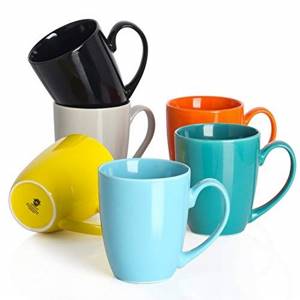
How many grams of flour are in 1 mug
Flour in a mug 200 ml = 130 grams of flour
Flour in a regular mug 250 ml = 160 grams of wheat flour
1 mug 300 ml holds = 190 grams of flour
One 350 ml mug holds = 225 grams of flour
Large 400 ml mug holds = 260 grams of flour
Large mug 450 ml holds = 300 grams of flour
A half-liter
mug holds 500 ml = 340 grams of flour
Attention! For correct calculations of the weight of flour, cups, mugs, and glasses should not be tamped with flour.
How many tablespoons of sugar are in 250 ml
| Proportion | Number of tablespoons |
| 1 glass is | 10 heaped tablespoons of sugar |
| 3/4 cup sugar is | 8 heaped tablespoons of sugar and 1 heaped tablespoon |
| 2/3 cup sugar is | 7 heaped tablespoons of sugar and 1 heaped tablespoon |
| 1/2 cup sugar is | 5 heaped tablespoons of sugar |
| 1/4 cup sugar is | 3 level tablespoons of sugar |
Attention! When it is written that the spoon is heaped, it means that this is the maximum amount of sugar that can fit in the spoon.
How many grams of sugar are in a glass (question, answer)
- How many glasses is 100 grams 100 g of sugar is half a faceted glass of sugar
- 150 grams of sugar is how many glasses? 150 g of sugar is 6 heaped tablespoons of sugar
- 180 grams of sugar is how many glasses? 180 g of sugar is 7 heaped tablespoons of sugar plus 1 level teaspoon of sugar
- 200 grams of sugar is how many glasses? 200 g of sugar is 1 full glass of sugar 200 ml
- 250 grams of sugar is how many glasses? 250 g of sugar is 1 full 200 ml glass of sugar plus 2 heaped tablespoons of sugar
- 300 grams of sugar is how many glasses? 300 g of sugar is 1 full faceted glass of sugar plus 4 heaped tablespoons of sugar
- 350 grams of sugar is how many glasses? 350 g of sugar is 1 full faceted glass of sugar plus 6 heaped tablespoons of sugar
- 400 grams of sugar is how many glasses? 400 g of sugar is 2 cups of granulated sugar, filled to the brim
- 500 grams of sugar is how many glasses? 500 g of sugar is 2 and a half full faceted glasses of sugar
- 600 grams of sugar is how many glasses? 600 g of sugar is 3 full faceted glasses of sugar
- 700 grams of sugar is how many glasses? 700 g of sugar is 3 and a half cups of sugar
- 800 grams of sugar is how many glasses? 800 g of sugar is 4 faceted glasses of sugar (to the brim)
- 900 grams of sugar is how many glasses? 900 g of sugar is 4 and a half full faceted glasses of sugar
- 3 4 cups of sugar? 3/4 cup of sugar is 150 grams of sugar
- 2 3 cups of sugar? 2/3 cup sugar is 133 grams of sugar
- 1 2 cups of sugar? 0 5 cups of sugar is 100 grams of sugar
- 1 4 cups of sugar? 1/4 cup sugar is 50 grams of sugar
